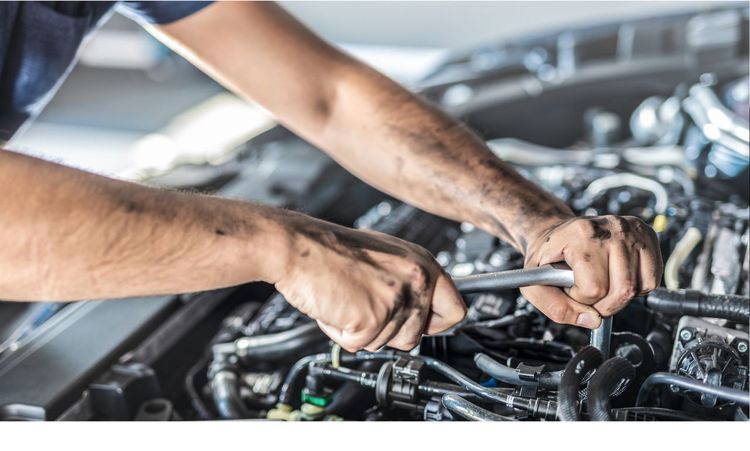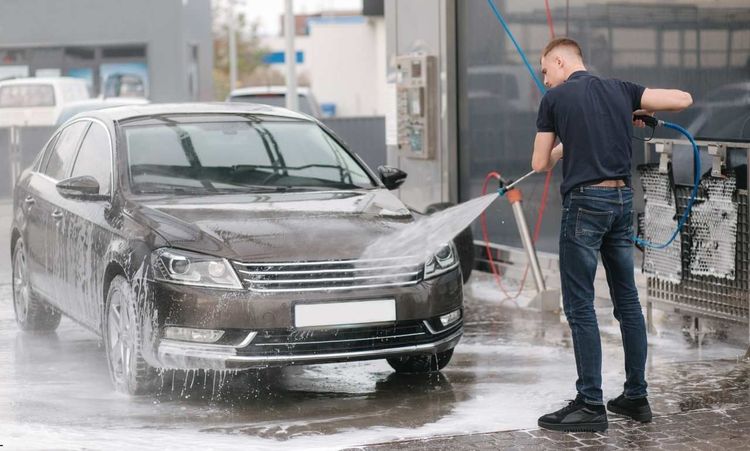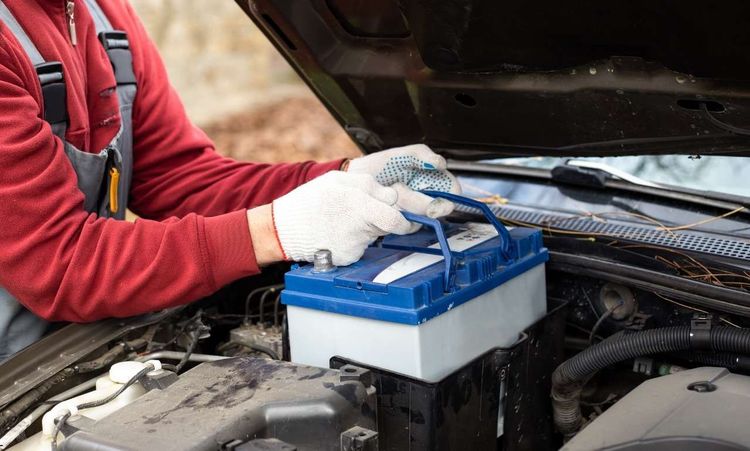Have you ever experienced that unnerving moment when you've shut off your car and pulled out the ignition key, but the engine refuses to call it a day? It's like your vehicle's throwing a mini tantrum, insisting on one more encore. So, what causes the engine to run on after the ignition is turned off? Let's dive into this mechanical mystery and unravel the reasons behind this stubborn engine behavior.
What is Engine Run-on?

Engine run-on, often nicknamed "dieseling," occurs when a gasoline engine keeps running after the ignition switch has been turned off. Unlike diesel engines that operate on compression ignition, gasoline engines rely on spark plugs to ignite the fuel-air mixture in the combustion chamber. When your engine keeps going without this spark—well, it's acting like a diesel engine, hence the term "dieseling."
This phenomenon is common in older vehicles with carbureted engines and less sophisticated ignition systems. Modern vehicles with electronic ignitions and engine control units (ECUs) are less susceptible but not entirely immune.
What are the Common Symptoms of Engine Run-on?
- Persistent Engine Operation: After removing the ignition key, the engine continues to run, chug, or cough.
- Sputtering and Shaking: The vehicle may shudder or vibrate as the engine struggles to shut down.
- Unusual Noises: Knocking, pinging, or rattling sounds emerge from the engine compartment.
- Exhaust Emissions: Smoke or fumes escape from the tailpipe, sometimes in irregular bursts.
- Erratic RPMs: The engine RPMs fluctuate before finally coming to a stop.
If the engine continues running after turning off the ignition, it's more than just a quirk—a sign that something needs attention.
Why Does Engine Run-on Occur?
Overheating
When your engine temperature skyrockets, components within the combustion chamber, like the cylinder head and pistons, become excessively hot. This residual heat ignites the fuel mixture without any help from the spark plugs.
- Hot Spots in Combustion Chamber: Carbon buildup on pistons and valves creates glowing embers—unwanted ignition sources.
- Cooling System Failures: A faulty radiator fan, clogged coolant passages, or a bad temperature sensor can prevent proper engine cooling. The temperature gauge might be your first indicator, showing readings above normal operation levels.
- Low-Grade Fuel: Using a lower octane fuel than recommended can lead to pre-ignition and knocking. Lower octane gas yields less energy yet combusts more easily under pressure.
Fuel System Problems
Even after turning off the ignition key, if fuel continues to flow into the combustion chamber, residual heat or glowing carbon deposits can ignite it.
- Faulty Fuel Shut-off Solenoid: This component should halt fuel flow when the engine is off. If it malfunctions, ample fuel supply keeps the engine running.
- Leaking Fuel Injectors: A leaking fuel injector allows unspent fuel into the combustion chamber.
- Malfunctioning Fuel Pump: If the pump doesn't stop, fuel flow continues unchecked.
Electrical Malfunctions
Electrical issues can prevent the ignition circuit from shutting down properly.
- Defective Ignition Switch: If the ignition switch doesn't completely cut power, the ignition modules or electronic ignitions keep supplying electrical energy.
- Residual Electrical Energy: Weak ignition systems or faulty wiring, like damaged black ground wires, might cause residual energy to keep the spark plugs firing.
- Ignition Modules and Coils: Faulty components can cause electrical issues, keeping the ignition source active.
High Idle Speed
An idle speed set too high can keep the engine running.
- Idle Speed Settings: If the idle speed increases beyond normal, more fuel-air mixture enters the combustion chamber.
- Throttle Position Sensor Malfunction: A faulty sensor might prevent the throttle from closing completely, allowing excess air mixture in.
- Idle Timing Issues: Incorrect idle timing can cause the engine RPMs to stay elevated.
Carbon Buildup
Over time, carbon deposits accumulate inside the engine, leading to:
- Increased Compression Ratio: Deposits reduce combustion chamber volume, upping the compression ratio and causing pre-ignition.
- Hot Spots: Carbon buildup creates hot spots that ignite the fuel mixture even after shutdown.
Air-Fuel Mixture Issues
The wrong mix can wreak havoc.
- Lean Run Engine: Too much air and insufficient fuel cause higher combustion temperatures, leading to overheating.
- Rich Fuel Mixture: Excess fuel means unspent fuel lingers and is ready to ignite.
- Air Leaks: Cracked vacuum hoses or a faulty air bleed valve disrupts the air mixture.
Understanding these factors helps pinpoint what causes the engine to run on after the ignition is turned off, setting you on the path to a solution.
What are the Key Components to Inspect?

Spark Plugs
The unsung heroes of ignition.
- Heat Range: Hotter plugs retain more heat. If overheating is an issue, switching to a colder plug helps dissipate excess heat.
- Wear and Tear: Worn spark plugs might not transfer heat effectively, leading to hot spots.
- Type of Plug: Using the wrong kind can contribute to pre-ignition and run-on.
Ignition System
Your ignition system's health is crucial.
- Ignition Timing: Incorrect timing can cause the engine to run hotter. Refer to the vehicle repair manual for proper settings.
- Ignition Modules and Coils: Faulty components can keep supplying spark after shutdown.
- Electrical Connections: Loose or corroded wires, especially black ground wires, can cause electrical issues.
Fuel Delivery System
Fuel should stop when you say so.
- Fuel Pump: A malfunctioning pump might continue fuel flow.
- Fuel Injectors: Leaking injectors allow unspent fuel into the combustion chamber.
- Fuel Shut-off Solenoid: Ensure it's cutting off the fuel supply upon shutdown.
Air Intake System
Air matters just as much as fuel.
- Air Filters: Clogged filters affect the air mixture, causing a rich fuel mixture.
- Throttle Position Sensor: A faulty sensor may not signal the throttle to close completely.
- Vacuum Hoses: Cracks or leaks alter the air-fuel mixture.
Engine Cooling System
Keep it cool.
- Radiator and Fan: A faulty fan or clogged radiator can't dissipate heat effectively.
- Coolant Levels: Low coolant leads to overheating. Check for leaks in hoses and connections.
- Thermostat: A stuck thermostat prevents proper coolant flow.
By inspecting these components, you can pinpoint what causes the engine to run on after the ignition is turned off.
How to Troubleshoot
Ready to tackle the issue head-on? Here's how.
Initial Checks
Start simple.
- Monitor Engine Temperature: Is it running hot? The temperature gauge can reveal overheating issues.
- Listen and Observe: Unusual noises or behaviors during shutdown provide clues.
- Check for Warning Lights: A Check Engine light may indicate underlying problems.
Testing Spark Plugs
Assess their condition.
- Visual Inspection: Remove and inspect for carbon deposits or damage.
- Verify Heat Range: Ensure you're using the correct type as per the vehicle repair manual.
Examining the Fuel System
Fuel flow should stop when the engine does.
- Fuel Pressure Test: Use a gauge to check for pressure after shutdown.
- Inspect Fuel Injectors: Look for leaks or malfunctions.
- Test Fuel Shut-off Solenoid: When turning off the ignition, listen for a click.
Inspecting Electrical Connections
Electrical gremlins can be sneaky.
- Ignition Switch Test: Use a multimeter to ensure it cuts power properly.
- Check Wiring: Look for the ignition circuit's damaged wires or loose connections.
- Battery Terminals: Ensure battery positive and negative terminals are secure to prevent residual energy flow.
Checking Engine Tune and Performance
An out-of-tune engine invites trouble.
- Idle Speed Adjustment: Use a tachometer to ensure idle speed settings are within normal ranges.
- Timing Light Test: Verify ignition timing aligns with specifications.
- Compression Test: Assess engine health and look for internal issues.
Understanding what causes engine run-on after the ignition is turned off makes troubleshooting more effective.
What are the Common Solutions to the Engine Run-On?
Let's fix this, shall we?
Adjusting Timing
- Retard Ignition Timing: Slight adjustments can reduce combustion chamber temperatures.
- Follow Specifications: Always adhere to manufacturer guidelines for ignition timing.
Replacing Faulty Components
- Spark Plugs: Install new ones with the correct heat range.
- Ignition Parts: Replace defective ignition modules, coils, or the ignition switch.
- Fuel System Components: Fix or replace leaking fuel injectors and faulty fuel pumps.
Cleaning Fuel System

- Use Fuel Additives: High-quality cleaners remove carbon deposits.
- Professional Services: Consider fuel injector cleaning or induction system cleaning.
- Carbon Cleaning: Remove stubborn buildup from the combustion chamber.
Ensuring Proper Engine Tuning
- Regular Maintenance: Keep up with oil changes, air filters, and spark plug replacements.
- Engine Performance Checks: Periodically test engine components.
- Software Updates: Modern vehicles may benefit from ECU updates.
Address Cooling System Issues
- Flush Coolant System: Remove contaminants and replace old coolant.
- Replace Faulty Parts: Thermostats, radiator caps, or hoses may need attention.
- Ensure Proper Function: Verify the radiator fan and coolant temp switch are working.
Now's the time to take charge. Don't let engine run-on leave you puzzled. With these insights, you can tackle the issue and restore your car to obeying the ignition key.




